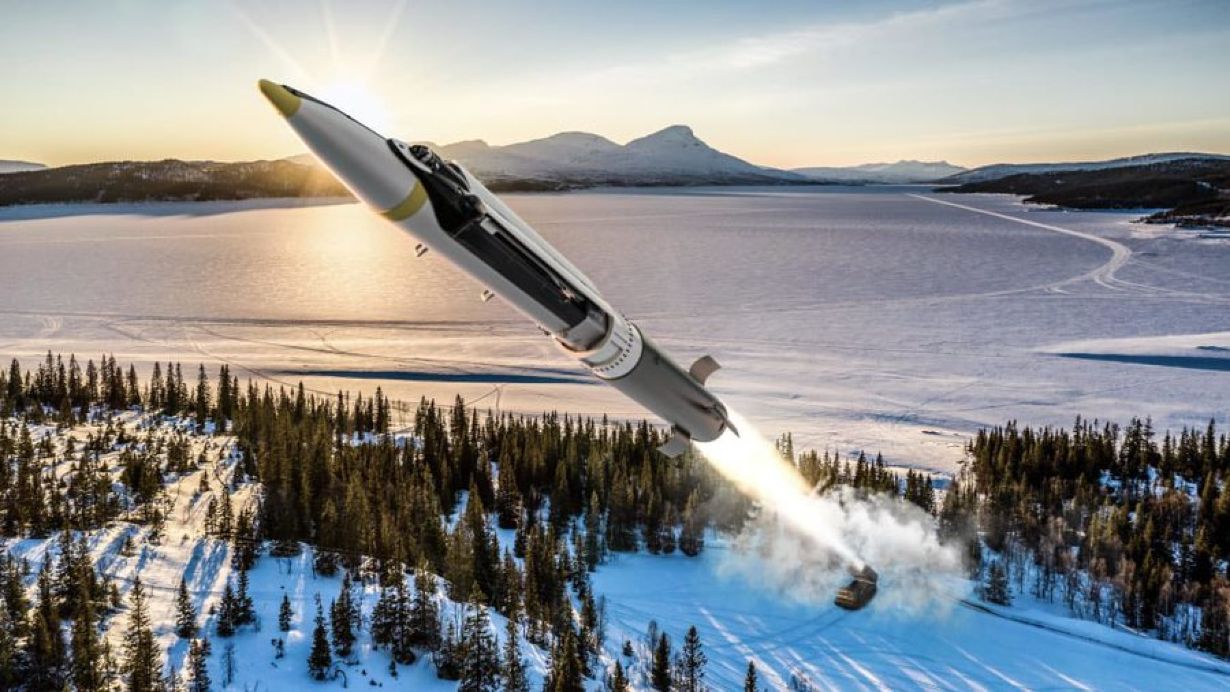The war in Ukraine is more urgent and needs the immediate attention of the US administration, while tension between China and Taiwan is more of a medium to a long-term threat.
This seems to be the thinking in the US government, as reports have emerged about the sale of the Ground-Launched Small Diameter Bomb (GLSDB) for Taiwan, being possibly held back for three years until Kyiv’s needs are met.
The GLSDB is the fusion of an M26 missile, and a 115 kg air-launched GBU-39/B SDB guided bomb, with a maximum launch range of 150 km.
The munition uses an inertial guidance system and GPS. It is jointly developed and manufactured by Boeing and Swedish defense major SAAB and entered mass production between late-2022 and early-2023, according to Taiwan’s Up Media.
US officials have repeatedly differentiated between Russia and China, both in their statements and documents like the National Defense Strategy (NDS) and National Security Strategy (NSS).
The former is an immediate “acute strategic threat,” while China is a “pacing challenge” that represents a long-term peer competitor possibly jeopardizing American global primacy.
Key Weapon For Both Taiwan & Ukraine
The Taiwanese Army operates the M142 High Mobility Artillery Rocket System (HIMARS) and the M270 Multiple Launch Rocket System (MLRS), which can fire the GLSDB.
The new munition will enable Taiwan to create a three-tiered strike capability along with the Guided Multiple Rocket Launch System (GMRLS) and the Army Tactical Missile System (ATACMS), with launch ranges of 80 km and 300 km, respectively.

The GLSDB glides towards its target when the rocket motor runs out, greatly enhancing its range. The entire projectile, which weighs 113 kg, comes with an “advanced anti-jam GPS system-aided inertial navigation system, combined with a multipurpose, penetrating blast-and-fragmentation warhead and programmable electronic fuze.” The munition reportedly can engage a target from any angle, including reverse slope engagements.
They can be used in conjunction with other anti-ship missiles like the Hsiung Feng III for defending Taiwanese coasts from China’s People’s Liberation Army Navy (PLAN) amphibious transports. In February, the US announced sending GLSDBs to Ukraine as a part of a US$2.2-billion aid package.
However, as previous EurAsian Times analysis showed, these systems collectively give Taiwan only a tactical advantage, which can temporarily delay or complicate China’s attack and occupation plans. They will eventually succumb to China’s numerically and technologically superior air, space, and naval assets.
According to the Up Media report, the US accepted the Taiwanese request to purchase the GLSDB but explained that their “policy gives priority to supplying Ukraine with this type of ammunition.” Thus, Taiwan’s Ministry of National Defense (MND) did not include the GLSDB in the 2024 defense budget.
Meanwhile, Russia said it shot down the GLSDB in Ukraine last week, making it the first time Moscow intercepted the ‘deadly’ weapon. It has claimed to have similarly intercepted the US-made HIMARS rockets mid-air by employing its Buk and TOR surface-to-air missile systems multiple times.
In Ukraine, the weapon could help strike Russian forces, logistics hubs, strategic terrain in Crimea, and long, thinly stretched supply lines in the east in Donbas. At one point, these had become a serious vulnerability before the Armed Forces of Ukraine (AFU).
Anemic US Defense Industrial Base
The delay over the GLSDB also represents deeper issues with the American industrial base, which is struggling with post-pandemic supply chain constraints. After having dwindled their stock of Javelins Anti-Tank Guided Missiles (ATGM), 155-mm artillery rounds, and HIMARS rockets, US defense majors had pointed out how it would be a few years until they could get production numbers up and replenish their own stocks.
For instance, regarding the 900,000 155-mm rounds that Ukraine used to fire from the M777 howitzers that the US supplied, the Pentagon acquisition chief stated that it is increasing their production from 14,400 rounds to 36,000 a month can only happen by 2025.
Ukraine had been burning through 11,000 rounds daily, which the US industry could manufacture only in a month.
Another example is Lockheed Martin which manufactures the HIMARS, Guided Multiple Rocket Launch System (GMLRS), MLRS, Javelin ATGM, Precision Strike Missile (PrSM), and the Terminal High Altitude Air Defense (THAAD) at its Arkansas facility. The company revealed in an earnings call in October 2022 that even with ahead-of-contract capital expenditure, it will be years before it expands manufacturing capacity.
- The author can be reached at satamp@gmail.com
- Follow EurAsian Times on Google News